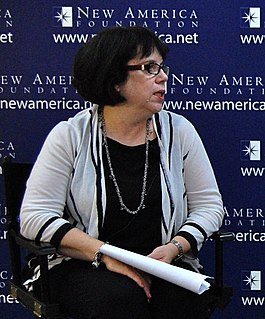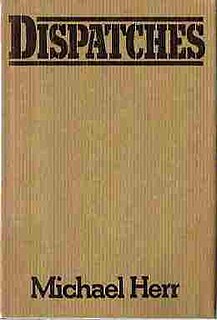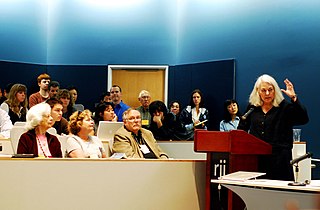News style, journalistic style, or news-writing style is the prose style used for news reporting in media such as newspapers, radio and television.
Open-source journalism, a close cousin to citizen journalism or participatory journalism, is a term coined in the title of a 1999 article by Andrew Leonard of Salon.com. Although the term was not actually used in the body text of Leonard's article, the headline encapsulated a collaboration between users of the internet technology blog Slashdot and a writer for Jane's Intelligence Review. The writer, Johan J. Ingles-le Nobel, had solicited feedback on a story about cyberterrorism from Slashdot readers, and then re-wrote his story based on that feedback and compensated the Slashdot writers whose information and words he used.
New Journalism is a style of news writing and journalism, developed in the 1960s and 1970s, that uses literary techniques deemed unconventional at the time. It is characterized by a subjective perspective, a literary style reminiscent of long-form non-fiction and emphasizing "truth" over "facts", and intensive reportage in which reporters immersed themselves in the stories as they reported and wrote them. This was in contrast to traditional journalism where the journalist was typically "invisible" and facts are reported as objectively as possible. The phenomenon of New Journalism is generally considered to have ended by the early 1980s.

Ars Technica is a website covering news and opinions in technology, science, politics, and society, created by Ken Fisher and Jon Stokes in 1998. It publishes news, reviews, and guides on issues such as computer hardware and software, science, technology policy, and video games. Many of the site's writers are postgraduates and some work for research institutions. Articles on the website are written in a less-formal tone than those in traditional journals.

Deborah Blum is an American journalist and the director of the Knight Science Journalism program at the Massachusetts Institute of Technology. She is author of books including The Poisoner's Handbook (2010) and The Poison Squad (2018), and has been a columnist for The New York Times and a blogger for Wired.

Science journalism conveys reporting about science to the public. The field typically involves interactions between scientists, journalists, and the public.
Narrative journalism, also referred to as literary journalism, is defined as creative nonfiction that contains accurate, well-researched information. It is related to immersion journalism, where a writer follows a subject or theme for a long period of time and details an individual's experiences from a deeply personal perspective.

Dispatches is a New Journalism book by Michael Herr that describes the author's experiences in Vietnam as a war correspondent for Esquire magazine. First published in 1977, Dispatches was one of the first pieces of American literature that portrayed the experiences of soldiers in the Vietnam War for American readers.
Anjana Ahuja is a British Indian science journalist and a former columnist for The Times. She is now a contributing writer at the Financial Times. She also contributes to The Daily Telegraph, Prospect, New Scientist and the Radio Times. She was named Best Science Commentator at the 2013 Comment Awards. Ahuja, who was educated at a comprehensive school in Essex, read physics at Imperial College London, and then took a PhD in space physics during which she worked on data about the Sun's magnetic field from the Ulysses probe.

Medical journalism is news reporting of medical news and features. Medical journalism is diverse, and reflects its audience. The main division is into (1) medical journalism for the general public, which includes medical coverage in general news publications and in specialty medical publications, and (2) medical journalism for doctors and other professionals, which often appears in peer-reviewed journals. The accuracy of medical journalism varies widely. Reviews of mass media publications have graded most stories unsatisfactory, although there were examples of excellence. Other reviews have found that most errors in mass media publications were the result of repeating errors in the original journal articles or their press releases. Some web sites, such as Columbia Journalism Review and Hippocrates Med Review, publish and review medical journalism.
Jon Daniel Franklin is an American writer. He was born in Enid, Oklahoma. He won the inaugural Pulitzer Prizes in two journalism categories both for his work as a science writer with the Baltimore Evening Sun. Franklin holds a B.S. in journalism from the University of Maryland. He is currently professor emeritus of journalism at his alma mater; previously, Franklin taught creative writing at the University of Oregon and was the head of the technical journalism department at Oregon State University. He received honorary degrees from the University of Maryland in 1981 and Notre Dame de Namur University in 1982.
The following outline is provided as an overview of and topical guide to journalism:
The Finkbeiner test, named for the science journalist Ann Finkbeiner, is a checklist to help science journalists avoid gender bias in articles about women in science. It asks writers to avoid describing women scientists in terms of stereotypically feminine traits, such as their family arrangements.

Judith B. Newman is an American journalist and author. She writes about entertainment, relationships, parenthood, business, beauty, books, science, and popular culture. Her work has run in more than fifty publications, including The New York Times, Vanity Fair,Harper's, The Wall Street Journal, Allure and Vogue. Newman's books include the memoirs You Make Me Feel Like an Unnatural Woman: The Diary of a New (Older) Mother and To Siri With Love.

Faye Flam is an American journalist. She has written for Science Magazine and wrote two weekly columns for The Philadelphia Inquirer, including one on sex and one on evolution. Flam wrote a book on the influence of sex on human evolution and society. She teaches science writing and lectures on communication to scientific forums, and is a journalism critic for the MIT Knight Science Journalism Tracker.
In automated journalism, also known as algorithmic journalism or robot journalism, news articles are generated by computer programs. Through artificial intelligence (AI) software, stories are produced automatically by computers rather than human reporters. These programs interpret, organize, and present data in human-readable ways. Typically, the process involves an algorithm that scans large amounts of provided data, selects from an assortment of pre-programmed article structures, orders key points, and inserts details such as names, places, amounts, rankings, statistics, and other figures. The output can also be customized to fit a certain voice, tone, or style.
Jo Chandler is an Australian journalist, science writer and educator. Her journalism has covered a wide range of subject areas, including science, the environment, women's and children's issues, and included assignments in Africa, the Australian outback, Antarctica, Afghanistan and Papua New Guinea. She is currently a lecturer at the University of Melbourne's Centre for Advancing Journalism and Honorary Fellow Deakin University in Victoria, Australia.

Jacqui Banaszynski is an American journalist. She was the winner of the Pulitzer Prize for Feature Writing in 1988. Banaszynski went on to become a professor and a Knight Chair at the school of journalism at University of Missouri.
The Open Notebook(TON) is a science journalism non-profit organization, online magazine, and publisher. Its purpose is to help science journalists improve their skills. It publishes articles and interviews on the craft of science writing and maintains a database of successful pitch letters to editors. TON also runs a paid fellowship program for early-career science journalists. The Open Notebook is supported by foundation grants and individual donations, and also partners with journalism and science communication organizations.

Siri Carpenter is an American freelance science journalist and editor living in Madison, Wisconsin. The author of multiple articles in Scientific American, Science,APA Monitor, and other publications, she is a co-founder and the editor-in-chief of The Open Notebook. In 2018 Carpenter was elected to a two-year term as president of the National Association of Science Writers.









